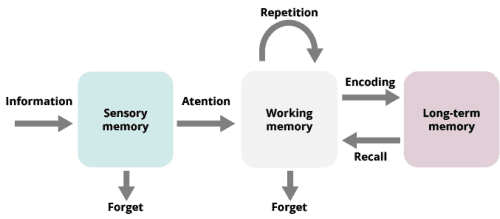Creating effective training videos
In today’s fast-paced and constantly evolving world, the need for continuous learning and development has never been greater. With the increasing demand for new skills and knowledge, traditional training formats such as lectures and textbooks are no longer sufficient. This is where training videos come in and create new scope for designing learning environments. Why is this so? Videos offer an engaging, dynamic and interactive way to acquire new knowledge and skills, making them an indispensable tool for education and training.
Are digital media therefore superior to traditional teaching media?
Richard E. Clark says no. He says: “There is no good reason to suppose that learners who do the same thing learn something different only because of the medium” (1983).
Nevertheless, digital media can be used to change the learning situation so that it is more effective. Therefore, today we like to take up the most important aspects to consider when developing a training video.
To do this, we will look at the following:
- The Cognitive Load Theory
- The Cognitive Theory of Multimedia Learning
- The functions that promote active learning in videos
- The functions that promote attention in training videos
Cognitive Load Theory by Sweller (1988, 1989, 1994).
This theory suggests that memory consists of three components.

Sensory memory is very short-term and gathers information from the environment. Some of this information is selected for temporary storage and processing in the working memory, which also has a limited capacity. This processing is a prerequisite for encoding it into long-term memory, which has virtually unlimited capacity.
John Sweller identified the three components of cognitive load on working memory as the following.
- Intrinsic load: This is the capacity required just to solve the task itself. For example, the intrinsic load to solve this problem (2 + 2) is less than for this problem (64×8+7).
- Extraneous load: It is the cognitive load corresponding to processing irrelevant stimuli. For example: distractions or poor training planning.
- Germane Load: This is the mental load that aims to encode the new information into long-term memory
Since processing capacity is limited, this means that as one of the loads increases, the others decrease proportionally.
For example, if the audio quality is poor, the trainer is not following a clear line of thought and the neighbour is drilling, there will be a lot of extraneous load and consequently a lower germane load. This interferes with clean information storage and consequently proper learning cannot take place. If learning is to take place optimally, then the germane load must be maximised.
Good trainers keep extraneous loads to a minimum by preventing distractions and ensure that participants use an appropriate amount of intrinsic load by choosing tasks that are not too easy or too difficult. If the task is very easy for the participants, such as 2 + 2, then there is not enough new information to integrate. On the other hand, if the intrinsic load is very high, the participants cannot integrate anything because they do not understand anything.
Training videos Videos offer many new ways to optimise the use of this theory. By recording a training video, many distracting aspects of the environment can be manipulated or controlled. In addition, supplementary animations can be targeted and used more effectively. This can reduce distracting aspects of the environment, improve the way of speaking, find the perfect thread and direct attention better.
Cognitive Theory of Multimedia Learning.
This builds on Sweller’s Cognitive Load Theory (1988, 1989, 1994) and states that working memory has two channels for information intake and processing: a visual/pictorial channel and an auditory/verbal channel.
The capacity of these channels is limited. Therefore, in order to maximise the amount of information received, both channels need to be stimulated without overloading either of them.
If the trainer talks about the topic, the amount of information going through the auditory channel increases. If he/she also shows pictures or animations, the second channel is stimulated with information. In this situation, both channels are activated and more information is processed and thus stored, so that a deeper learning experience takes place.
However, this theory also shows how overloading one channel can lead to impaired learning: If the trainer talks about a certain topic and shows an explanatory text at the same time, it can lead to an overload of the auditory channel in the audience.
Training videos therefore open many new doors on how to stimulate both channels simultaneously and appropriately for an optimal learning experience.
Active learning in videos.
Now let’s look at the features that promote active learning in videos.
But first, what does active learning mean?
According to the ICAP framework by Chi & Wiley (2014), there are four different levels of processing information. The level of processing influences how well information is stored. The higher the level of processing, the better the information is stored.
- If a participant sits back in the lecture hall and just listens, he/she is only passively processing the information.
- On the other hand, he/she writes down or underlines information on a piece of paper, then the information is being actively processed.
- If a participant produces additional outputs, such as drawing a concept map or asking questions, he/she is processing the information on a constructive level.
- The highest level of learning is the interactive level, for example when a participant discusses the topic with someone else.
It is not always possible to reach the highest level in a training because this level requires a understanding of the topic at hand, so it requires time resources that are not always available.
But planning a training video to reach the active learning level is not that difficult. Brame C. J. published an article in 2015 in which she summarised the conclusions of several studies on this topic.
- The first study found that the use of guiding questions promotes active learning. Asking a participant questions before or at the beginning of the video to guide him/her and make him/her aware of the important things can facilitate and favour the learning experience. If the trainer asks at the beginning of the video: Are digital media superior to traditional teaching media? This primes the participants to search for and retain information that answers this question.
- The second study found that participants learn best when they can interact with the video, i.e. pause it, play it back, change its speed, etc.
- The third study found that videos perform better when questions with personalised feedback are integrated into the video.
- The fourth and final study found that participants learn better when videos are part of a larger task. For example, when explanatory videos are mixed with lab exercises in a research project.
Functions that promote attention in training videos.
And that brings us to the last point: features that promote attention in training videos. For this, we will look at the most comprehensive study of video engagement to date, using data from 6.9 million video sessions. The study by Guo P. J., Kim J. & Rubin R. in 2014 found six factors that influence attention.
- And the factor that influences engagement the most is video length. The authors of the study formulated the hypothesis: shorter videos are more engaging not only because of length, but also because they may be better planned.
- Second finding: videos that intersperse a lecturer’s talking head with slides are more engaging than slide-only videos.
- Third: Videos in which the personality of the host is noticeable are more appealing than those in which this is not the case.
- Fourth:. Tutorials with Khan-style drawing (a certain type of animation) are more engaging than those that have PowerPoint slides.
- Fifth: Even high quality recorded classroom lectures are not as exciting when used in an online course.
- And now for the last point: videos in which the hosts speak fairly fast and with enthusiasm are more engaging than videos in which they speak calmly and slowly.
Let us summarise the most important aspects to consider.
– The Germane Load should be maximised, while the Extraneus Load should be reduced and the Intrinsic Load kept at an appropriate level.
– Both the visual and auditory channels should be stimulated without overloading either with too much or competing information.
– Videos should be an active experience by providing guiding questions at the beginning, allowing participants to navigate through the video at their own pace, including questions with personalised feedback, and/or making the video part of a larger training session.
– Videos should be kept as short as possible. This does not mean that long videos are of lower quality, but that videos should be planned to be of a length that is comfortable for users.
– Both a talking head and graphic elements should be used. This can help direct the focus to what is important.
– If the situation allows it, the trainer’s personality should be noticeable in the video by speaking informally, making jokes, etc.
– Ideally, graphic elements should be used that are more engaging than just PowerPoint slides.
– Plan accordingly, because the way of speaking in a video is different from the way of speaking in a face-to-face seminar/training/lecture.
With the information from these theories and studies, hopefully you now know what to look for and what to consider when creating training videos. We hope you enjoy trying them out. And as every skill requires: It also takes time, patience and practice. But there is no better time than now to start. Have fun!


